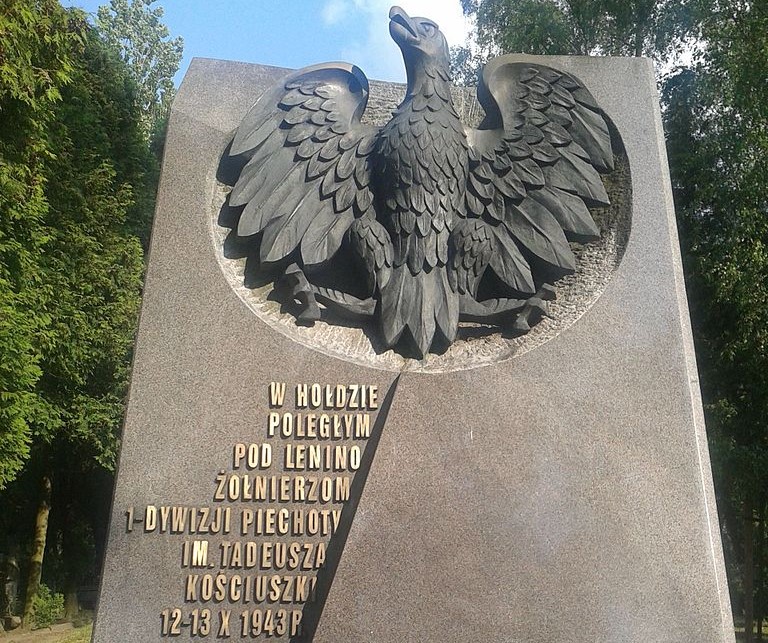On 12 October 1943 a baptism of fire of the 1st Tadeusz Kościuszko Infantry Division – a Polish unit subservient to the Red Army took place. At the same time it was the beginning of the combat trail of the Polish Army (the so-called People’s Army) commanded by Gen. Zygmunt Berling. In its ranks served mainly those Sybiraks, who – due to different reasons – did not manage to join the Polish Army in the Soviet Union, organized in 1941-1942 by Gen. Władysław Anders.
From 12 to 13 October 1943 in Belarus, near the Lenino village, a bloody battle between the German 4th Army and 1st Tadeusz Kościuszko Infantry Division took place. Polish soldiers, who had only 64 days of traning after their anguish on Sybir, suffered serious losses. For example, already during the first engagement half of the 1st battalion of the 1st infantry regiment have fallen.
During the times of Polish People’s Republic the battle of Lenino was presented as one of the greatest victories in the history of the Polish army. That is why from 1950 to 1992 Armed Forces Day was celebrated in Poland on the anniversary of this battle. However, from the military point of view it was a disaster as Polish losses reached out to around 20%. However, as the historian prof. Paweł Wieczorkiewicz sarcastically notices, it was difficult to imagine a better, in terms of propaganda, beginning of the historic Polish-Soviet brotherhood of arms”.
On the permanent exhibition of Sybir Memorial Museum we present the combat trail of the so-called Berling’s Army, which left the USSR and then, after many battles, reached Berlin, participating in capturing the capital city of Germany.
It should be remembered that for those Sybiraks who had numerously joined this unit, commanded by communist officers, it was the only way to leave the Soviet hell. After the war they could talk about their involvement in defeating Germany, but for 45 years of communism in Poland they had to remain silent about the ordeal of Sybir and about the fact that they mostly originated from the territory of the II Polish Republic, annexed by the Soviets.
Photo: The upper part of the monument to soldiers of the 1st Tadeusz Kosciuszko Infantry Division killed at Lenino. Powązki Military Cemetery in Warsaw. Public domain, CC BY-SA, 3.0, by: pankracy




